For two months, photographer Yevhen Sosnovskyi and his family bid farewell to life day by day. Two months in the besieged Mariupol. Two months in a damp basement under the barrage of shelling, from missile strikes to automatic gunfire. Miraculously, they managed to escape from hell, save themselves, and take photographs, as each shot serves as evidence of Russian crimes.
“At first, there was a shock, but at the same time, I was convinced it wouldn’t last long.”
On the morning of the full-scale war, Yevhen Sosnovskyi, like millions of Ukrainians, woke up in anxiety and tension. In the last few days, the situation had been quite tense, and they truly believed that “something was going to happen.” And then that day arrived.
– On February 24, I woke up and, as usual, opened my tablet to check the latest news, – the photographer began his story. – Because in the last few days, the situation had been quite tense: we were really expecting something to start. And on February 24, a real war began. Even though that creature named Putin called it some kind of special operation, it was a real war against Ukraine and against all of civilized society.
As Yevhen explains, Mariupol was completely surrounded and blocked within a few days. Leaving was difficult because all the roads were being shot at. People trying to leave in their own cars often came under fire and died.
– In the first few days, however, I believed that it would only last about ten days, and that’s it—Mariupol would be Ukrainian again, we just needed to endure, – says Yevhen. – In addition, it was extremely difficult for us to leave because my wife’s 90-year-old bedridden mother was with us, and we didn’t even have a wheelchair. So we stayed. My grandmother lived about 800 meters away from us in a private house, and we stayed in a high-rise building in the city center, not far from the drama theater and about a mile and a half from the Azovstal plant. So our area quickly found itself in the epicenter of hostilities.
“The shell destroyed the room, and luckily, it didn’t destroy me, but I was buried in the earth, and I got a concussion.”
The first massive shelling happened on March 3, and Yevhen and his wife were at home at the time.
– We heard the sounds of explosions, and the windows in our building and the neighboring ones were shattered—there was a constant tinkling of broken glass. We took cover in a corridor in our apartment (we lived on the first floor) because we thought it would be safer. The feelings were terrible: we could hear shells flying or aircraft working, and we understood that every minute could be our last. Fortunately, at that time, our building wasn’t hit, but one just 50-100 meters away from us was hit.
Only later did they realize that the first shelling and the terrible experiences they had to endure were nothing compared to what would happen in Mariupol later. On March 12, the Russians dropped a bomb right on a school near their building, where there were no military personnel. This is when Yevhen finally understood that the Russians were intentionally destroying Ukraine.
– On March 15, there was the first hit in my mother-in-law’s house, – Yevhen continues. – I happened to be there at the time. The shell destroyed the room, and luckily, it didn’t destroy me, but I was buried in the earth, and I got a concussion. In a split second, it seemed like it was all over—complete darkness, couldn’t hear anything. But I managed to crawl out from under the rubble—I miraculously survived. Three days later, there was another massive shelling. In the morning, we were getting ready to go to my wife’s grandmother’s house, but at that moment, someone knocked on our door. We saw our niece, Olena, at the door with two children. They came to us covered in blood and mud: they had been shot at, their house was hit, and they were wounded. It was horrifying: the eight-year-old boy had a piece of skin torn off his back, and the 15-year-old girl had a head wound. Their father, Olena’s husband, was severely injured. In fact, he saved them by holding the door when it was blown off during the explosion. He died eight days later. Olena, despite the shelling, managed to bring the children to us, and that’s how they survived. We did what we could: we treated their wounds ourselves and did makeshift bandaging. A neighbor, to whom I’m very grateful, gave us hydrogen peroxide.
“The building stood completely blackened, and there was someone’s charred body in front of the entrance.”
After what we went through, the family could only ‘rest’ for a few days, as another massive shelling occurred on March 20.
– We were all at home, sitting in the corridor with the children. That’s when our building was directly hit, and a fire started on the fourth floor. A group of ‘kadyrovtsy’ [pro-Russian militants, kadyrovtsy are known for extrajudicial killings, torture, and other forms of violence] rushed into the stairwell and began pushing everyone out into the yard. They weren’t deterred by the fact that there were wounded women and children. They continued to force everyone out. We didn’t have time to take our belongings—it was heartbreaking to lose our family photo albums, which hold memories and our family history. We didn’t know where to go. Our neighbors allowed us into their basement. We stayed there for nearly two weeks. One day, I wanted to go to our house but saw that there was nothing left of our dwelling at all. The building stood completely blackened, and there was someone’s charred body in front of the entrance. Someone, it seems, tried to run out of the entrance but couldn’t, – Yevhen Sosnovskyi continues.
“We were so happy to see the light and water from the tap, and I remember I couldn’t tear myself away from a basket of bread for a long time…”
Another challenge was the lack of communication. The family didn’t understand what was happening in the country and near Mariupol. It was impossible to call their son and daughter.
– As a sort of solution for us, we had a receiver that, unfortunately, only picked up broadcasts from the so-called ‘DPR’ [Donetsk People’s Republic]. But we tried to listen to it and draw our own conclusions from what we heard. We understood that, despite the occupiers claiming they would take Kyiv or Kharkiv by May 9, they hadn’t succeeded in doing so yet. We also realized that the battle for Mariupol was still ongoing because there were battles at the ‘Azovstal’ plant.
In late April, Yevhen obtained another radio receiver and heard about the ‘green’ corridor during a telethon. With a wheelchair for his mother-in-law, the family decided it was time to seize the opportunity and leave.
– We didn’t have many belongings—we gathered them very quickly, and a neighbor gave us a ride to the assembly point, to the designated shopping center, – Yevhen recounts the evacuation attempts. – For several initial attempts, we waited in the rain without success, and no one came for us. After the third unsuccessful try, we started looking for a private driver. One was demanding a thousand dollars and mentioned mandatory screening. Since the city was aware of my pro-Ukrainian stance, I wouldn’t have fared well with screening. Eventually, we found a young man who took us on the bypass for 600 USD. But on the very first day, we went through about 15 checkpoints. I was really taking a risk because I had a camera with me and a memory card with photos I had taken throughout March and April, as well as other photo archives, including photos of the Navy and Azov Battalion… But it all worked out, and we made it to the free territory. We were so happy to see the light and water from the tap, and I remember I couldn’t tear myself away from a basket of bread for a long time…
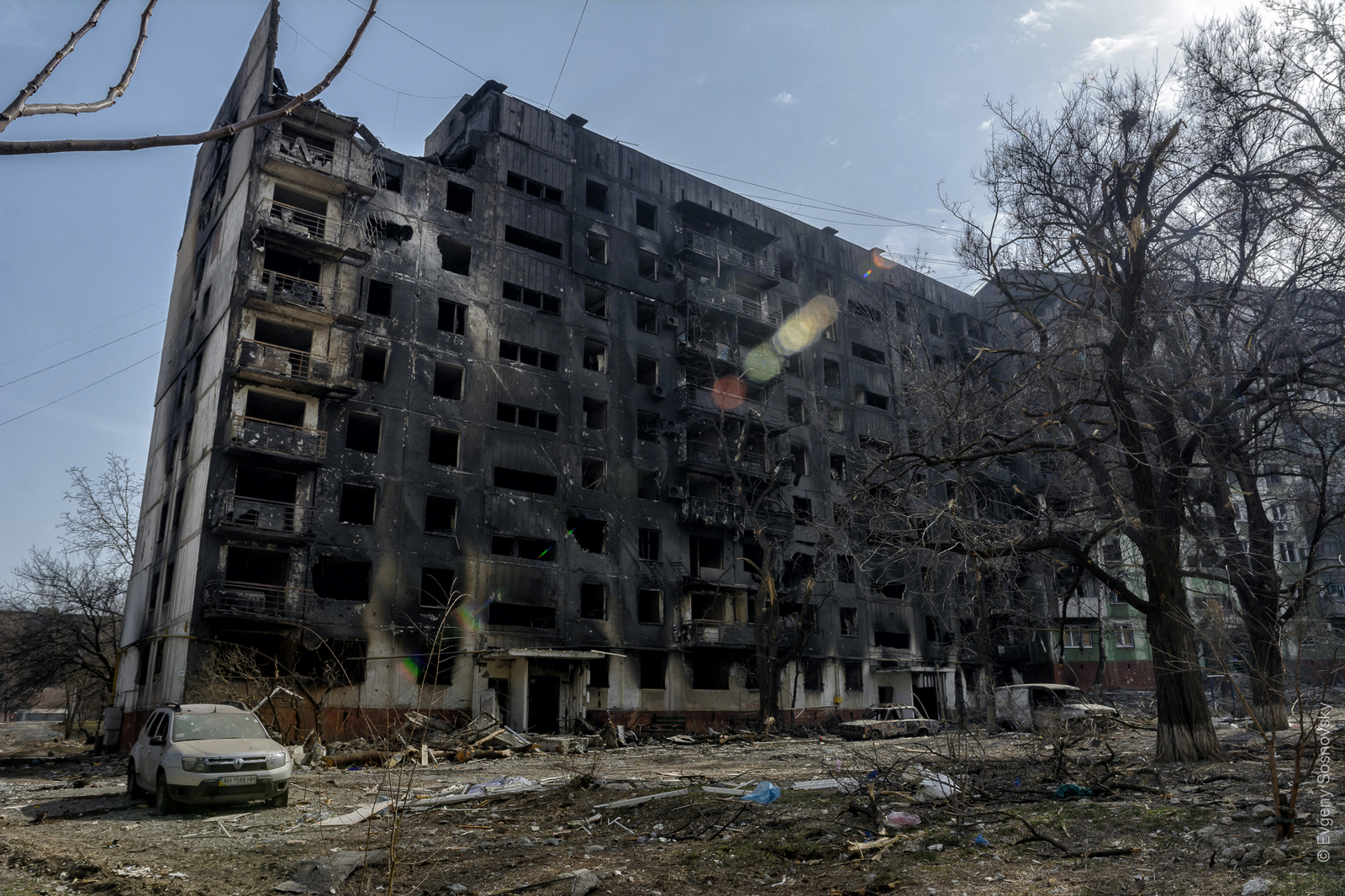
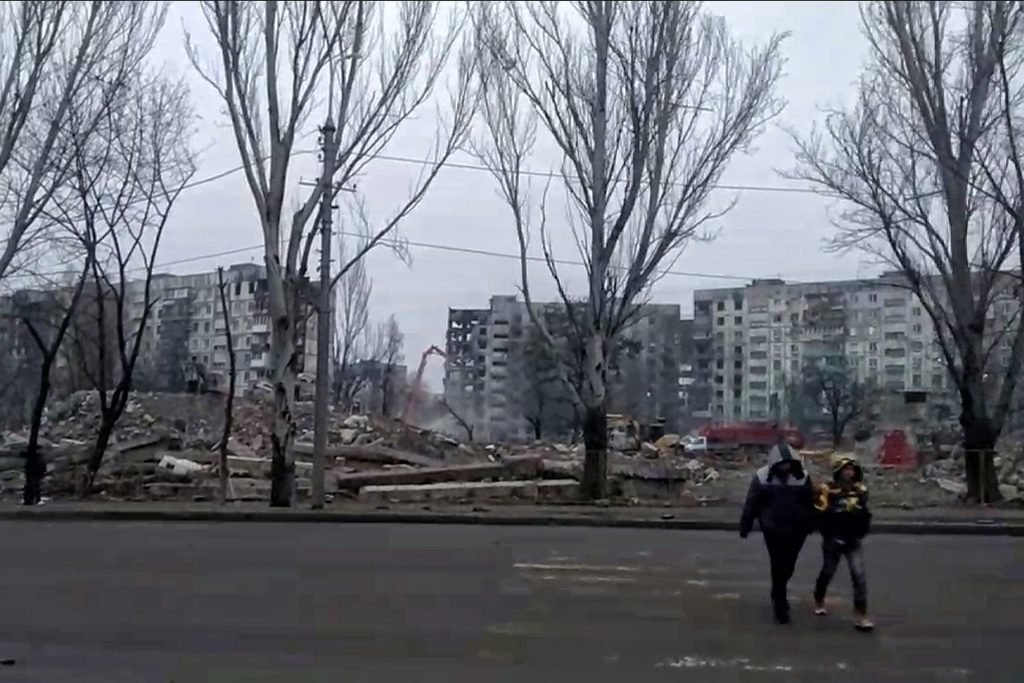
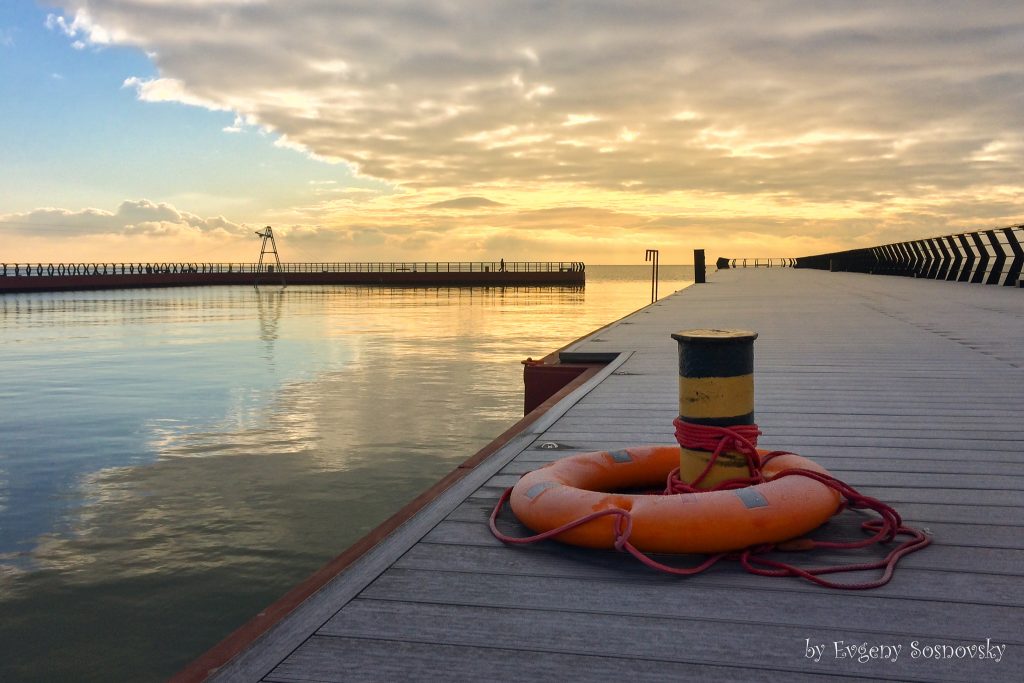
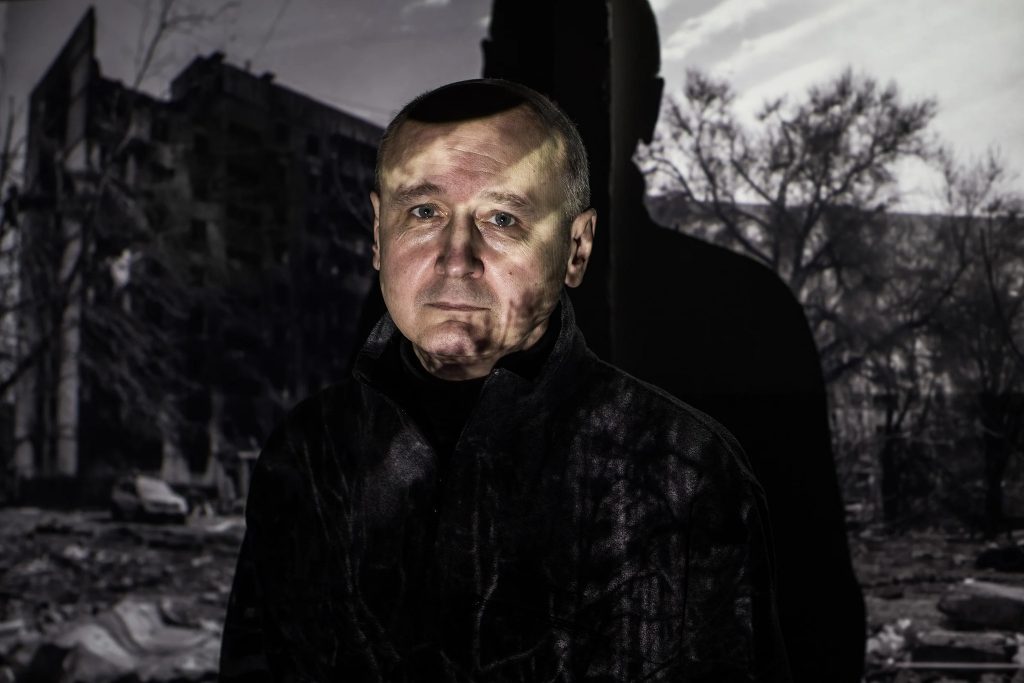
“A friend of mine called me in tears, confessing that she was starving.”
During their journey, Yevhen’s family encountered both kind and compassionate people, but for the most part, they had to rely on their own resources.
– We traveled from Tokmak to Zaporizhia, where we spent a few days in the center for internally displaced persons. But our goal was to reach Kyiv, where our daughter was, – the photographer recounts. – In the capital, the director of the company where our daughter works provided us with his grandmother’s apartment and allowed us to stay there. Then my university friend helped us find accommodation. Additionally, a woman from the United States offered her assistance. I asked her for housing for my niece and her two children, who were still in Mariupol at the time but were planning to leave. I’m very grateful for the support from these people. The initial period when we had just arrived was the most challenging. It took us a month or two to return to a semblance of normal life. However, I always think about all those who had to leave their homes. Do they feel supported by the state? Currently, these people receive only 2000 UAH in aid, and not everyone can work. Not everyone knows about the ‘I Am Mariupol’ centers. When I had just arrived in Kyiv, a friend called me in tears, confessing that she was starving. Many people like her exist, and some are even returning to Mariupol.
“I believe that Mariupol will be rebuilt, but it will no longer be the same Mariupol.”
Yevhen, like all Ukrainians, believes in Ukraine’s victory. In his opinion, the liberation of Mariupol will signify the actual end of the war for him. However, he cannot provide a definitive answer as to whether he can return home.
– Everything there will remind me of the horrors we had to endure. I didn’t capture everything I could have with my camera, for instance, I didn’t photograph the bodies of people lying in the middle of the street. The only person I photographed dead was my wife’s brother, just to document his death. So, I am confident that Mariupol will be rebuilt, but it will no longer be the same Mariupol where I grew up and spent almost 58 years of my life. For me, it will be a city built on bones and blood. I can’t imagine how anything other than a memorial can be built near the drama theater. In general, the entire city is a continuous memorial for me. Maybe someday I’ll come back just to walk the streets of my childhood. Although I’m not sure about that either, as those streets no longer exist; there will be others in their place. So, I hope Kyiv will welcome us, and we can live here together with our children, – Yevhen Sosnovskyi concludes.
This series, titled Executed Free Speech, is created as part of a project Drawing Ukrainian And International Audience’s Attention To Serious Violations Of Human Rights And Crimes Against Journalists And Mass Media By The Russian Federation, which is performed by the National Union of Journalists of Ukraine, with support from the Swedish non-profit organization Civil Rights Defenders.
JOURNALISTS ARE IMPORTANT. Stories of Life and Work in Conditions of War is a cycle of materials prepared by the team of the NUJU with the support of the Swedish human rights organization Civil Rights Defenders.
#CRD

 THE NATIONAL UNION OF
JOURNALISTS OF UKRAINE
THE NATIONAL UNION OF
JOURNALISTS OF UKRAINE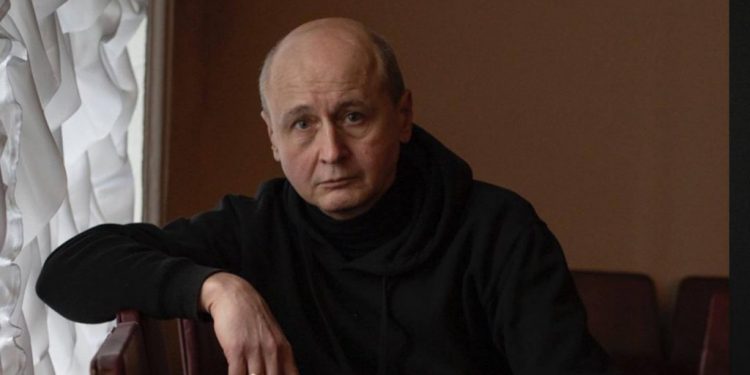
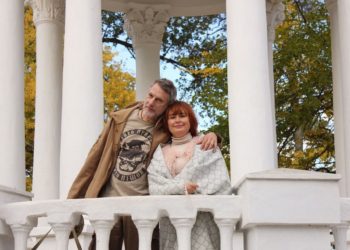
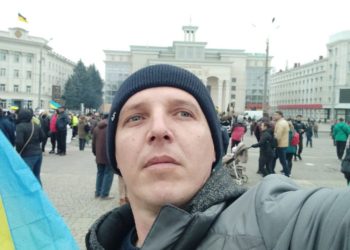
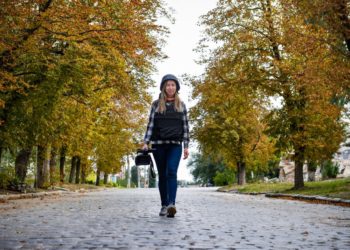
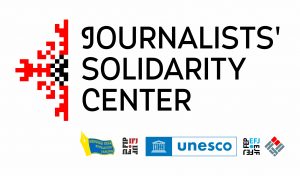
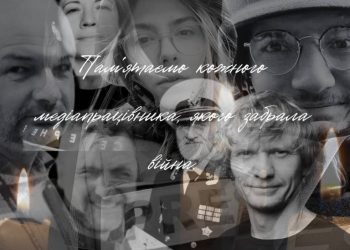







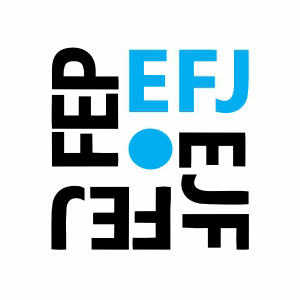



Discussion about this post